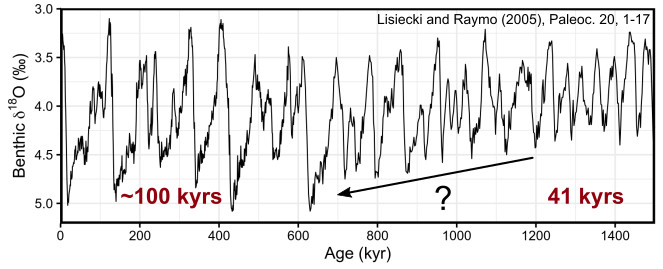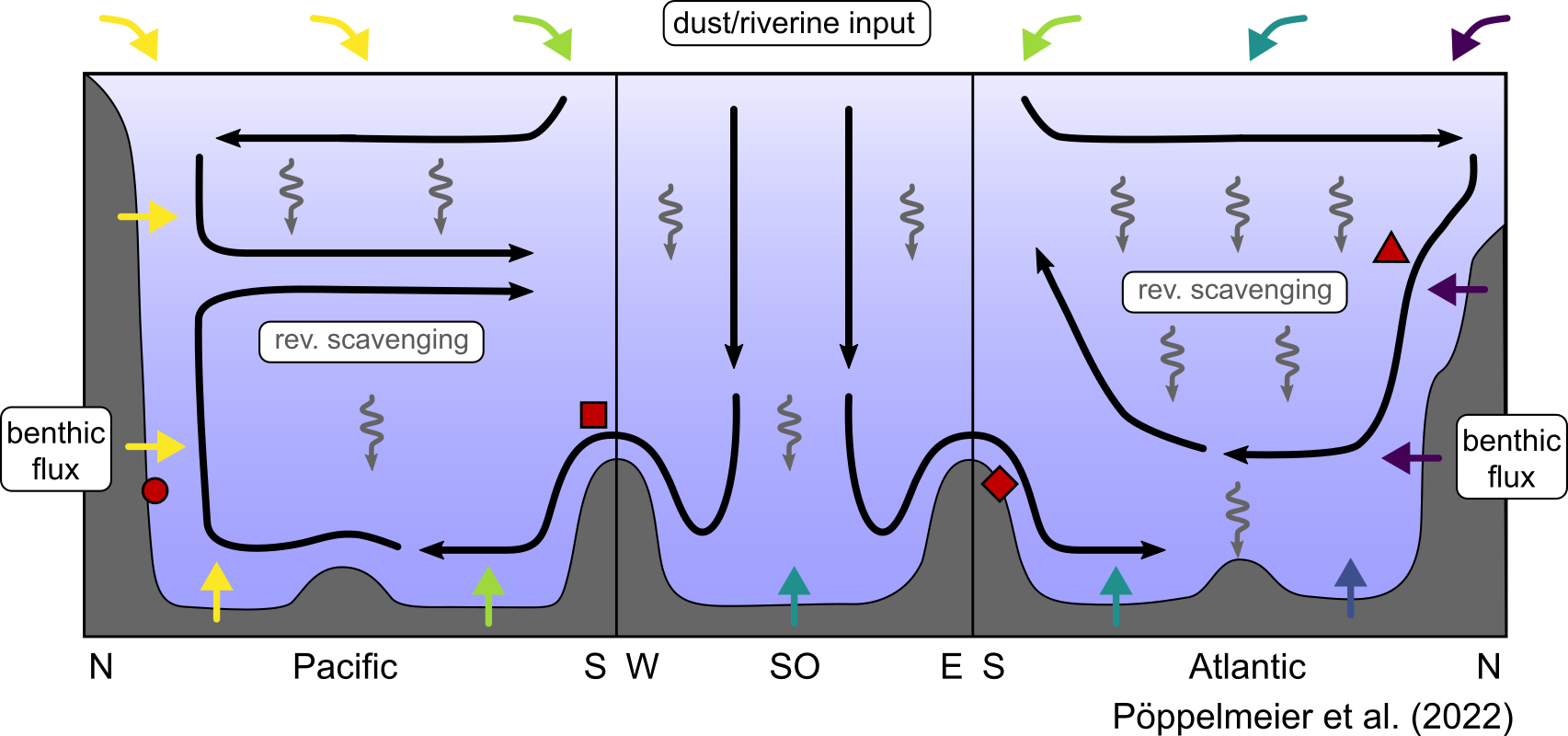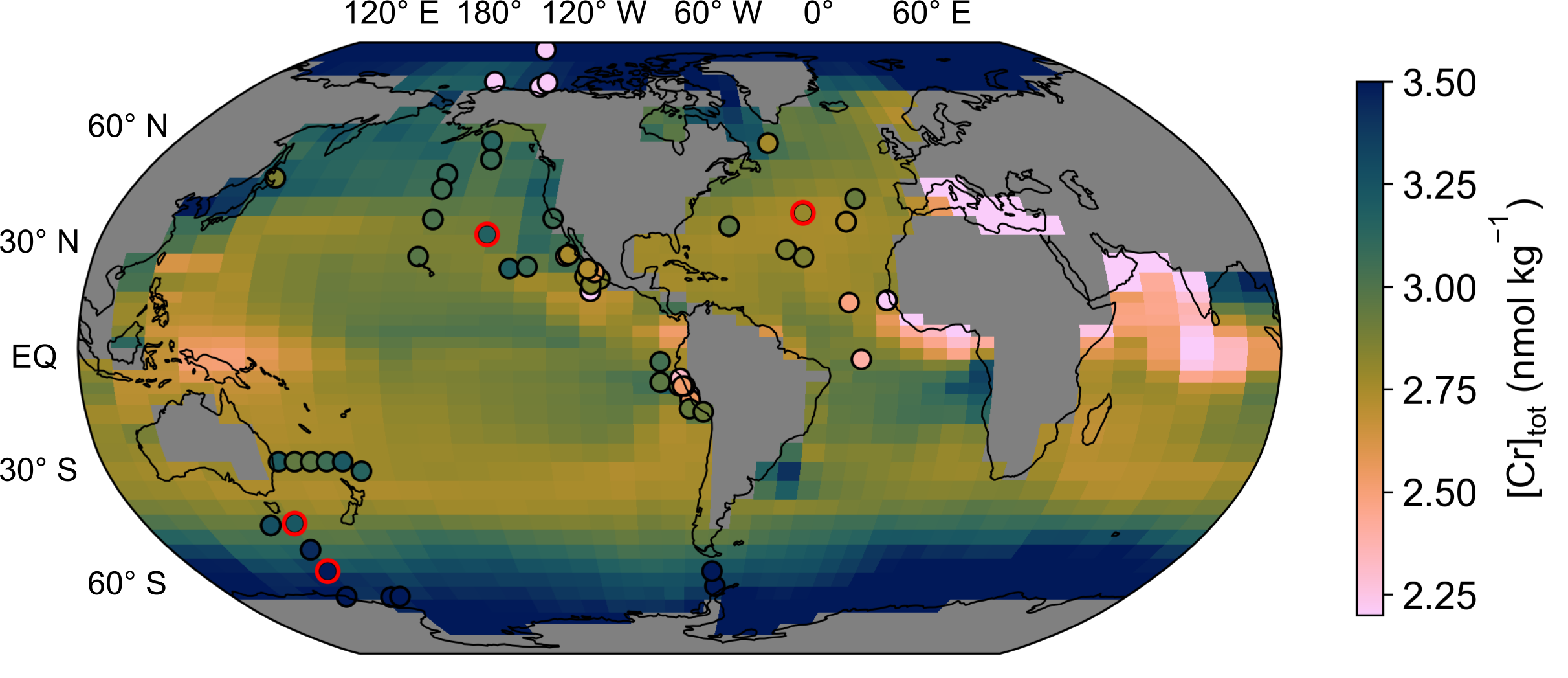Research
| Mid-Pleistocene Transition | Trace Metals | AMOC Stability |
Understanding glacial-interglacial cycles during the Mid-Pleistocene Transition
The recent geological past is characterized by the cyclic growth and decay of large continental ice-sheets in the northern hemisphere driven by changes in incoming solar radiation associated with Earth’s orbital configuration. These glacial-interglacial cycles initially responded to the 41,000 year pacing of Earth’s axial tilt, but about 1 million years ago this periodicity slowed down to ~100,000 year cycles without any discernible change in orbital parameters, thus indicating fundamental shifts in internal feedback mechanisms. My Marie-Curie project aims towards a comprehensive understanding of this unique climate transition through the employment of the Bern3D Earth System model.

In order to enable fully dynamical simulations of glacial-interglacial cycles I couple an ice-sheet model with the exceptionally computational efficient Bern3D Earth system model of intermediate complexity. Further, newly compiled paleoclimatic reconstructions will form important constraints on the past climate that can be directly compared to the wide palette of tracers implemented in the Bern3D model.
Trace metals as proxies for past water masses
Many dissolved trace metals in seawater possess the potenital to serve as proxies for different water mass characteristics, thus playing a crucial role in reconstructing the past and present state of the ocean.
For instance, in recent decades, neodymium (Nd) isotopes have emerged as a valuable geochemical tracer for determining the provenance of water masses. However, many aspects of the marine Nd cycle remain only poorly understood. I therefore try to further our understanding of this crucial proxy by reconstructing it from marine sediments and comprehensively simulating the Nd cycle using the Bern3D model under various boundary condition (see Pöppelmeier et al., 2022).

Recently (Pöppelmeier et al., 2021), I also started working on the marine chromium (Cr) cycle. Cr and its isotopes hold great potential as a tracer for past oxygenation and marine biological acitivity. I implemented this tracer in the Bern3D model and performed first assessments on the first-order controls that shape the global distribution of dissolved Cr and its two most important oxidation states Cr(III) and Cr(VI).

Other trace metals and ocean proxies that I’m interested in and that we can explicitly simulate in the Bern3D model are protactinium and thorium (indicator of circulation strength), stable carbon isotopes (indicator of water masses), and radiocarbon (indicator of water mass age and provenance).
Stability of the Atlantic Meridional Overturning Circulation
The Atlantic meridional overturning circulation (AMOC) is a critical constituent of inter-hemispheric redistribution of heat and carbon, and is considered a climate tipping point that might have been crossed in the past. Recent studies suggest that the AMOC transitioned to an anomalous weak state since the mid-twentieth century and could approach a tipping point towards collapse even within the twenty-first century. To better constrain the stability of the AMOC, I am investigating its past behavior by combining reconstructons of proxies (see also above) and combine these with model simulations. For more details see our recent paper.

